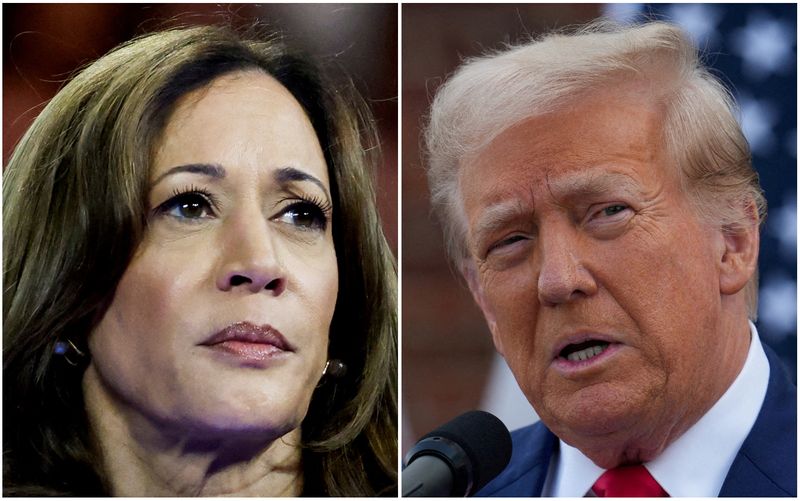Investing.com — The U.S. dollar is trading broadly above implied fair value, which UBS analysts say may indicate support from a recent increase in the odds that Donald Trump will win November’s U.S. presidential election.
However, they noted that the dollar remains within standard deviation ranges, which helps explain the volatility in the currency’s movements. This suggests that “any dollar-positive election risk premium is still muted,” the analysts said.
Over the past month, a measure that compares the dollar against a basket of its currency pairs has risen more than 3%.
The move comes as prediction markets such as Kalshi and PredictIt show that Trump is the clear favorite to emerge victorious after the November 5 vote.
However, these bets have received some attention because they deviate from national polling averages, which indicate Trump’s Democratic rival Kamala Harris has a narrow lead with just two weeks of campaigning left. Crucially, both candidates are virtually linked to a number of key battleground states that are expected to have a major impact on the outcome of the election.
A victory for Trump, who has called for tax cuts, looser financial rules and sweeping tariffs, could provide some support for the dollar, analysts say. For example, his proposal to impose a blanket tariff on US imports could hurt Asian and European exporters, potentially leading local central banks to cut interest rates. This in turn would potentially weaken their currency and strengthen the dollar.
Speaking to Bloomberg News last week, Trump dismissed concerns that these trade policies would hit the US economy, arguing that they would instead help “bring businesses back to our country.”
Outside of the election, analysts quoted by Reuters have said the dollar has been boosted by expectations that foreign central banks are likely to have to cut rates deeply because their economies are not growing as fast as the US. Meanwhile, uncertainty remains about the pace of the Federal Reserve’s long-awaited policy easing cycle, following a massive 50 basis point rate cut by the central bank in September.
(Reuters contributed to reporting.)


